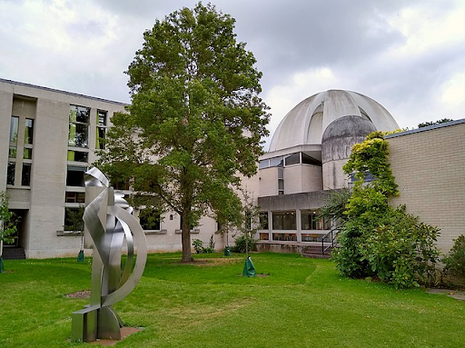College announces free Sunflower lanyards for students with hidden disabilities
Murray Edwards will become Cambridge’s first institution to officially recognise Sunflower lanyards

Murray Edwards College will provide free Sunflower lanyards to students with invisible disabilities.
These lanyards are worn to demonstrate that the wearer has a hidden disability, and may need additional time or support.
Murray Edwards told Varsity that the lanyards should arrive within the next few days. Students will be able to fill out an online form, so that the lanyard can be delivered to their pigeonhole.
Lizzie Shaw, the JCR Disabilities Officer, has campaigned for Sunflower lanyards to be provided by the college for free.
In a statement to Varsity, she said that her own struggles with a hidden disability motivated her to set up the campaign.
“I found that people might assume that I was able-bodied because I didn’t ‘look’ disabled, and because of this, it could be really hard to get the acknowledgement and support I needed,” she said.
Shaw continued: “This has been especially problematic during Covid, with the restrictions on the use of lifts, for example, or one-way systems that weren’t step free, meaning that I sometimes felt uncomfortable using lifts or going a different way, just because people can’t see from the outside that I’m disabled.
“I’d love to be able to walk around Cambridge feeling that I don’t have to prove my disability just because it doesn’t show on the outside and so decided to start in Medwards where I could begin to make some impact.”
In 2016, the Hidden Disabilities Sunflower was designed and launched in London Gatwick Airport, so that staff could identify those who may need additional help when moving through the airport. Since then, the lanyard has been adopted by airports, supermarkets, businesses and universities across the globe.
The lanyards are green with yellow sunflowers and can be worn by anyone with a hidden physical and/or mental disability, a specific learning disability or anyone who is neurodivergent.
During the pandemic, the lanyards were also worn to show that the wearer was exempt from wearing a mask.
Sophie Head, the JCR Social Media officer, highlighted that the current climate “has attached a stigma” to wearing sunflower lanyards because anti-maskers have worn them to avoid wearing a mask in public indoor spaces.
She hopes that the increased awareness of the lanyards will prevent those with invisible disabilities from being associated with anti-maskers.
“People need help and/or space sometimes, and these lanyards will help with that when they become recognised around college,” she said.
Lizzie also emphasized the importance of the lanyards being recognised by members of the college: “The general sense I’ve got is that people do want to be able to look out for those around them with hidden disabilities but just aren’t sure what to look out for or how to help.
“I have spoken with disabled students who have really loved the idea of not just providing lanyards, but making sure that they are recognised around college.
“What’s been especially great to see is how supportive those without hidden disabilities have been of this initiative as well.”
According to the ‘Back to Campus’ campaign by the Hidden Disabilities Sunflower, Cambridge University is not included in the list of UK universities that officially recognise the Sunflower lanyard.
Despite this, Murray Edwards has confirmed to Varsity that the lanyards will be officially recognised by the college.
Lizzie said that she was “hopeful” that the lanyards will receive a positive reception.
“I’m working with our amazing JCR social media officer to create a variety of content to help let people know what hidden disabilities lanyards are, how to get one and how to support someone wearing a hidden disabilities lanyard.”
 Comment / Plastic pubs: the problem with Cambridge alehouses 5 January 2026
Comment / Plastic pubs: the problem with Cambridge alehouses 5 January 2026 News / Cambridge academics stand out in King’s 2026 Honours List2 January 2026
News / Cambridge academics stand out in King’s 2026 Honours List2 January 2026 News / Cambridge businesses concerned infrastructure delays will hurt growth5 January 2026
News / Cambridge businesses concerned infrastructure delays will hurt growth5 January 2026 News / AstraZeneca sues for £32 million over faulty construction at Cambridge Campus31 December 2025
News / AstraZeneca sues for £32 million over faulty construction at Cambridge Campus31 December 2025 Interviews / You don’t need to peak at Cambridge, says Robin Harding31 December 2025
Interviews / You don’t need to peak at Cambridge, says Robin Harding31 December 2025










